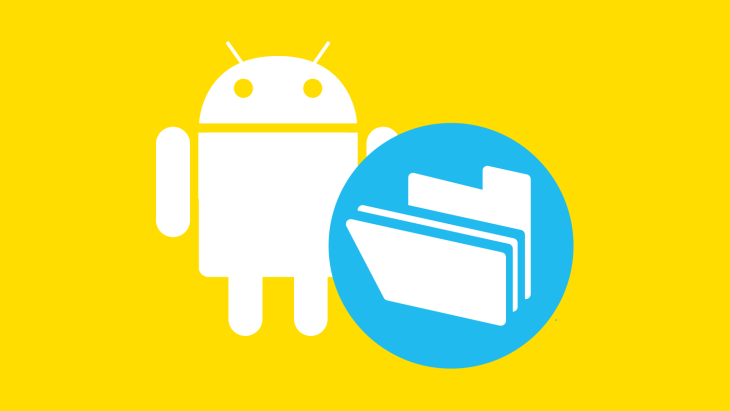
This is the third in a series of blog posts about the process and experience of creating and publishing our “RateTheApp” widget in an Android Library.
The series as a whole will look something like this:
In this post, we'll look at how to distribute your Library using JCenter.
Once you’ve open sourced your library, you might be tempted to sit back and wait for the world to realise how brilliant you’ve been and for your library to go viral.
However, back in the real world, you realise that no-one has noticed that your wonderful library has landed. Or maybe they’ve seen it but don’t seem motivated to try it out (developers are a lazy bunch by nature and any barriers to adoption you can remove the better).
You need a way of getting your library into the hands of developers that doesn’t require any effort on their part.
In this blog post, I’ll be describing how to “distribute your library” so that it is laughably simple for developers to start using it. In fact, it is so simple they can just try it out, on a whim almost, before deciding whether to stick with it.
Now they’ve got NO excuse for not using your wonderful library.
Most Android developers will be developing their apps using Android Studio which uses Gradle, an advanced build toolkit, to automate and manage the build process.
Including your Android library can be as simple as including the following one-liner in your project!
dependencies {
compile 'uk.co.brightec.ratetheapp:rate-the-app:0.9.1'
}
NB. If you want to know how it all works, I got my information from this excellent blog post which explains things in a lot more detail.
There are two main repositories that are generally used; JCenter (hosted by Bintray) and the older Maven Central.
In this post, I’ll be describing the process for distributing your library through JCenter which is the default repository for new projects created in Android Studio.
The basic process will be to:
dependencies {
classpath 'com.jfrog.bintray.gradle:gradle-bintray-plugin:1.4'
classpath 'com.github.dcendents:android-maven-gradle-plugin:1.3'
}
bintray.user=brightec bintray.apikey=<your bintray apikey>
ext {
bintrayRepo = 'maven'
bintrayName = 'rate-the-app'
publishedGroupId = 'uk.co.brightec.ratetheapp'
libraryName = 'RateTheApp'
artifact = 'rate-the-app'
libraryDescription = 'RateTheApp is an Android component that allows users to rate your app prompting them for further action depending on the rating they gave.'
siteUrl = 'https://github.com/brightec/RateTheApp-Android'
gitUrl = 'https://github.com/brightec/RateTheApp-Android.git'
libraryVersion = '0.9.1'
developerId = 'nickh'
developerName = 'Nick Holcombe'
developerEmail = 'nick@brightec.co.uk'
licenseName = 'The Apache Software License, Version 2.0'
licenseUrl = 'http://www.apache.org/licenses/LICENSE-2.0.txt'
allLicenses = ["Apache-2.0"]
}
// Place it at the end of the file apply from: 'https://raw.githubusercontent.com/brightec/JCenter/master/installv1.gradle' apply from: 'https://raw.githubusercontent.com/brightec/JCenter/master/bintrayv1.gradle'
repositories {
maven {
url 'https://dl.bintray.com/brightec/maven'
}
}
dependencies {
compile 'uk.co.brightec.ratetheapp:ratetheapp:0.9.1'
}
Two warnings from the blog post I was following:
“Please note that linking to JCenter is a one-time action. From now on, if you do any modification in your package, for example, upload new version binary, delete old version binary, etc. The change would affect to JCenter as well. Anyway since your own repository and JCenter are at the different place so you may need to wait for around 2-3 minutes to let JCenter sync the change.”
“And please be careful. If you decide to remove the whole package, library files placed on JCenter repository would not be deleted in this case. And they will be left just like zombie files which nobody could delete it anymore. So I suggest you that if you want to delete the whole package, please delete every single version from web interface first before removing the package.”
From now on, any developer that uses the JCenter() repository will be able to use our library with a single line of Gradle script.
dependencies {
compile 'uk.co.brightec.ratetheapp:rate-the-app:0.9.1'
}
So, don’t forget to update your README file on GitHub showing how (easily) your library can be installed and used.
As we said earlier, now the developers of the world have NO excuse for not using your wonderful library…
...assuming, of course, your library was worth using in the first place!
Search over 400 blog posts from our team
Subscribe to our monthly digest of blogs to stay in the loop and come with us on our journey to make things better!